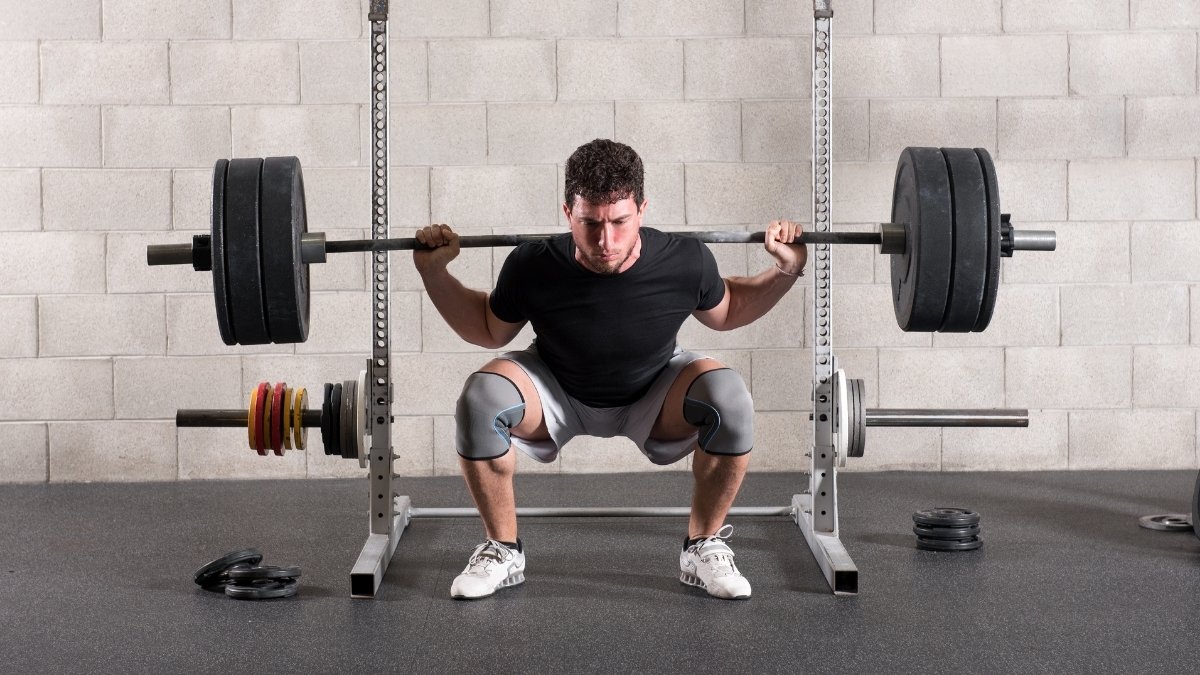The paused squat is an amazing exercise with a high return on investment. If you’re stuck at a training plateau or simply have chicken legs, this quick tweak in your squat can help you make enormous gains.
There are few better exercises to bring up your numbers fast than the paused squat; and, as we mentioned, even those looking to add mass to their thighs could benefit greatly from the paused squat.
Unless you frequent a hardcore gym, you will rarely see lifters take on this impressive variation — and that is to their detriment: they are leaving gains at the table!
1. The Paused Squat Eliminates the Stretch-Reflex Cycle
The stretch-reflex cycle, put simply, allows you to tap into the elasticity stored in your tendons and muscles to propel yourself through a movement more forcefully.
Taking a pause at the bottom of the squat eliminates said elasticity and forces you to contract your leg muscles and glutes harder in order to get through the lift.
It’s very difficult to cheat your way through a squat when you attempt this variation.
2. It’s a High Stimulus, Low Fatigue Exercise
It may seem a little nutty, but the paused squat isn’t as fatiguing as one might think, making it a perfect accomplice to a lifter who is cutting to shed fat or a kickass accessory movement to other lower body primary lifts.
When you’re cutting calories to lose fat, you will not have the same energy levels as you would while bulking or maintaining.
Consequently, you need to preserve your hard-earned muscle mass by implementing exercises with a high stimulus to fatigue ratio to get the most out of your training while you are depleted.
This variation of the king of lower body movements can certainly fit the bill.
3. Address Your Weaknesses
Many lifters are weak out of the “hole” or the bottom portion of the squat.
This variation specifically reinforces this weakness and enables the lifter to practice propelling themselves out of their weakness.
Not only will it add mass where it counts, but it will also significantly strengthen this portion of the lift.
4. The Paused Squat Forges Mind-Muscle Connection
Lifters with poor squatting form can benefit greatly by lightening the load a little and trying to establish a greater mind-muscle connection to help develop stronger legs in the process.
While you’re at the bottom of the lift — in the hole — as you cannot rely on the stretch-reflex cycle to plaster over mechanical weaknesses, you are forced to establish proper motor patterns.
As a result, you will train to make yourself more efficient at the squat, as a movement, and recruit more firing muscle fibers in the process.
5. It Will Build Your Core
The paused squat will bring up your core strength like little else.
Imagine descending with more than twice your bodyweight at the bottom of the lift and comfortably holding the weight across your back before coming back up?
The isometric portion of the pause elicits great core stability in the bottom position and in the concentric portion of the lift.
6. It Will Bring Up Your Other Numbers
The paused squat boasts immense carryover to your other lifts.
Many elite lifters employ it to help bring up their deadlift as many of the same muscles are used.
It can also help increase your vertical jump and all-round athleticism due to the muscles it recruits.
7. Your Upper Back Tightness Is a Must
Some lifters fail at higher weight loads in the squat as they lack appropriate tightness in their upper back.
You simply cannot execute a paused squat without keep your upper back tight.
This movement will help teach you how to remain tight throughout the lift.
8. It Will Strengthen Your Form
Again, like with upper back tightness and core strength, you will not be able to complete a paused squat if there are mechanical breakdowns.
The paused squat forces you to assume proper form — it’s a case of sink or swim!

Don’t hesitate to email us at [email protected] for personalized coaching and a client questionnaire if you’d like DEDICATED tailor-made personal training on strength training, building muscle, losing fat, developing athleticism, and more — all to your liking, lifestyle, habits, and taste!
Otherwise, don’t forget to claim your FREE eBook detailing how to lose 20lb of fat while building muscle in 12 weeks! You can claim it here.
Alternatively, you can pick up a FREE eBook on fundamental strength principles offering an introductory workout program.











